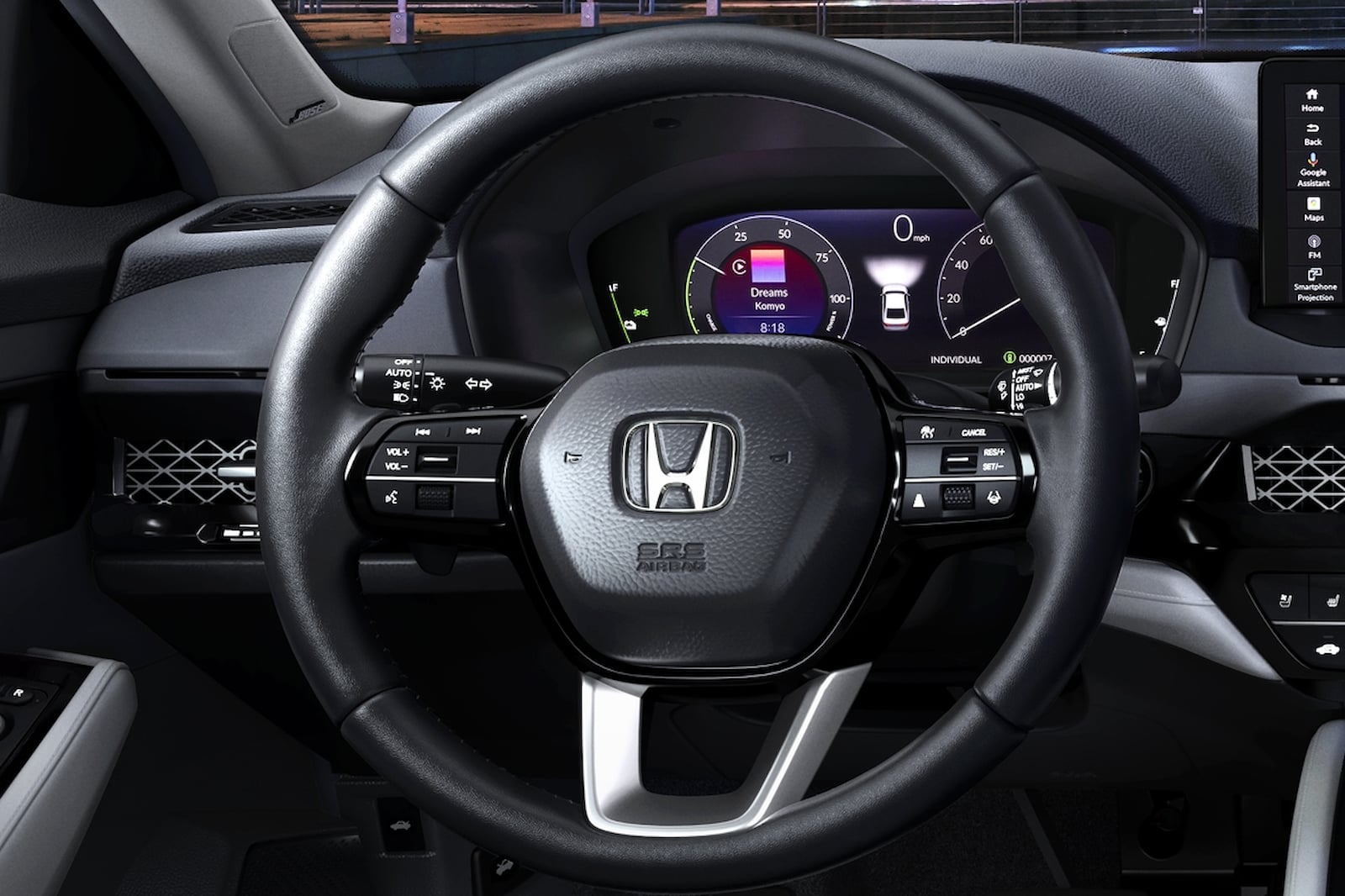The Art of Control: Exploring the Honda Accord Steering Wheel

Introduction: The steering wheel, an integral component of any vehicle, serves as a driver’s primary interface with their car. It is not just a functional element that facilitates turning; it embodies a connection between the driver and the road, a conduit for control and expression. The Honda Accord, a symbol of reliability and sophistication, features a steering wheel that encapsulates both functional excellence and aesthetic refinement. In this exploration, we delve into the world of the Honda Accord steering wheel, discussing its design evolution, ergonomic considerations, technological features, driving experience, and the broader context of steering wheel innovation in the automotive industry.
The Evolution of Steering Wheel Design:
The steering wheel has evolved significantly over the decades, transitioning from utilitarian functionality to a blend of functionality and aesthetics. In the case of the Honda Accord, this evolution is apparent:
- Historical Roots: Early steering wheels were simple, circular affairs made of wood or metal. They were primarily focused on facilitating the turning of the wheels.
- Ergonomics and Comfort: As cars became more sophisticated, steering wheel designs started to consider driver comfort and ergonomics. The Honda Accord steering wheel reflects this shift, with contours and grips designed to accommodate different hand sizes and driving styles.
- Aesthetic Enhancements: With the rise of design as a key differentiator in the automotive industry, steering wheels began to incorporate aesthetic elements. The Honda Accord steering wheel features a harmonious blend of materials, textures, and shapes that contribute to the vehicle’s overall visual appeal.
Ergonomic Considerations:
The design of the Honda Accord steering wheel is grounded in ergonomic principles that prioritize driver comfort and control:
- Grip and Contour: The steering wheel is contoured to fit comfortably in the hands of the driver, allowing for a natural and relaxed grip. The tactile experience of holding the steering wheel contributes to the overall driving comfort.
- Controls Placement: Functional controls, such as buttons for audio, cruise control, and phone connectivity, are strategically placed on the steering wheel for easy access. This design minimizes distractions and allows drivers to keep their hands on the wheel.
- Adjustability: The Honda Accord offers a steering wheel that is adjustable for both tilt and telescopic movement. This feature ensures that drivers of various heights can find the optimal driving position.
Technological Integration:
In the modern automotive landscape, steering wheels have evolved beyond their primary function of steering control. They now serve as hubs for various technological features:
- Multifunctional Controls: The Honda Accord steering wheel integrates various buttons and switches that allow drivers to control audio volume, phone calls, cruise control, and even infotainment systems without taking their hands off the wheel.
- Driver Assistance Features: Advanced driver assistance systems (ADAS), such as adaptive cruise control and lane keeping assist, are often controlled through buttons or paddles on the steering wheel. This integration enhances the ease and safety of using these features.
- Infotainment Systems: In many modern vehicles, steering wheels are equipped with controls that interact with the infotainment system. Drivers can change radio stations, navigate menus, and even initiate voice commands without diverting their attention from the road.
The Driving Experience:
The steering wheel of the Honda Accord significantly contributes to the overall driving experience:
- Responsiveness: The steering wheel’s responsiveness, in conjunction with the vehicle’s handling characteristics, contributes to a sense of direct control over the car’s trajectory.
- Feedback: The tactile feedback transmitted through the steering wheel provides information about the road surface, tire grip, and overall driving conditions.
- Engagement: A well-designed steering wheel enhances the driver’s engagement with the driving process. The Honda Accord steering wheel’s tactile qualities and responsive nature foster a connection between the driver and the vehicle.
Broader Context of Steering Wheel Innovation:
The evolution of the steering wheel in the Honda Accord is representative of broader trends in the automotive industry:
- Technology Integration: Steering wheels have become central hubs for accessing various vehicle functions and features. This trend aligns with the increasing digitalization of vehicles and the integration of advanced technologies.
- Driver-Centric Design: Automakers recognize the importance of driver comfort, ergonomics, and engagement. Steering wheel design is now an integral part of creating a driver-centric experience.
- Safety Prioritization: The placement of controls on the steering wheel contributes to driver safety by minimizing distractions and allowing drivers to keep their focus on the road.
Conclusion:
The Honda Accord steering wheel embodies a delicate balance between form and function. From its historical roots as a utilitarian tool for steering to its modern role as a multifunctional interface, the steering wheel has evolved to enhance driving comfort, control, and engagement. The Honda Accord’s steering wheel showcases the fusion of ergonomic considerations, technological integration, and aesthetic refinement.
As the automotive industry continues to evolve with advancements in technology, connectivity, and driver assistance systems, the steering wheel will remain a focal point of innovation. It will continue to adapt to the changing needs and preferences of drivers, ensuring that the act of controlling a vehicle remains a seamless and enjoyable experience. The Honda Accord’s steering wheel exemplifies this evolution, serving as a testament to the art and engineering that go into creating the perfect point of contact between driver and machine.
